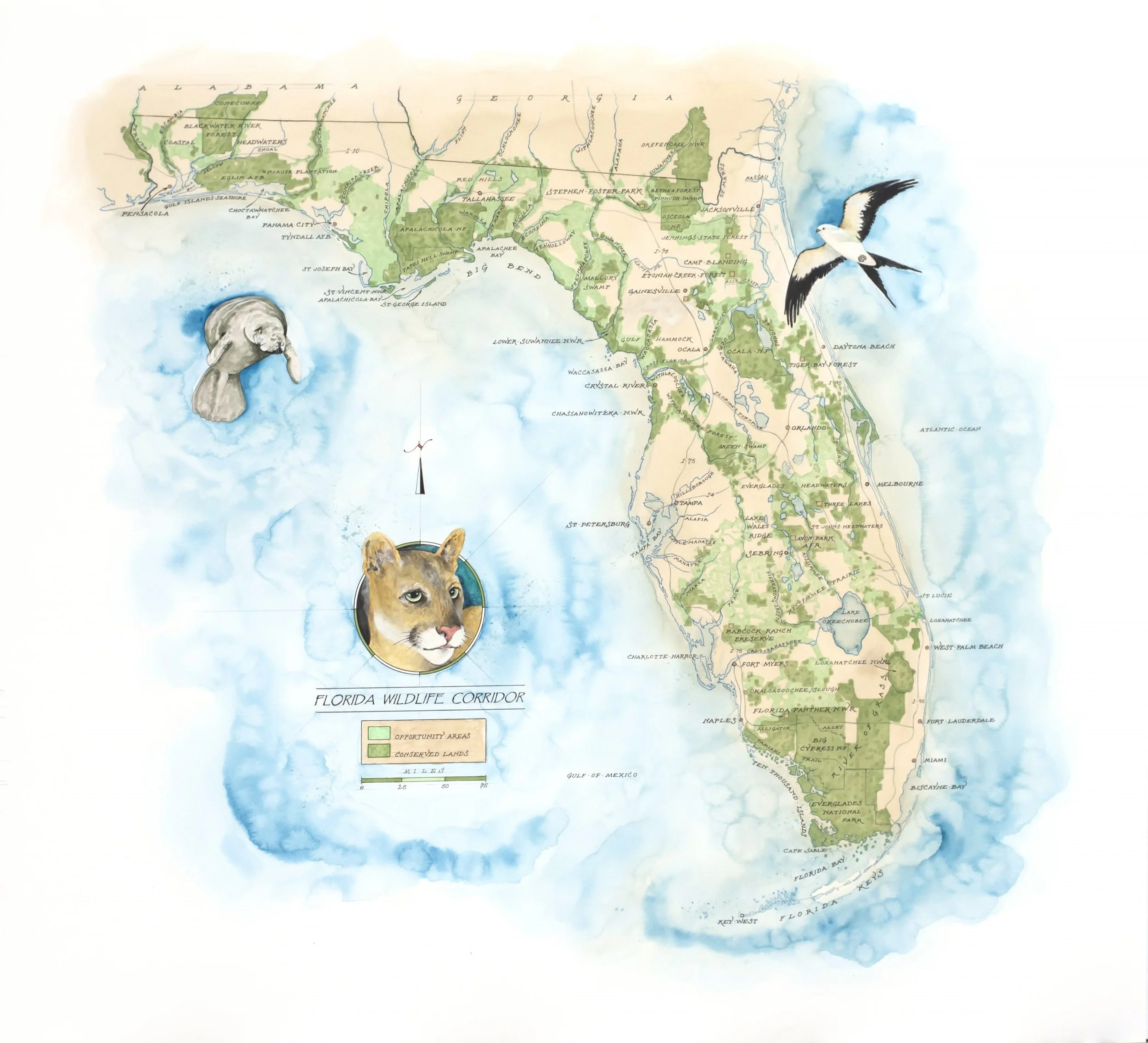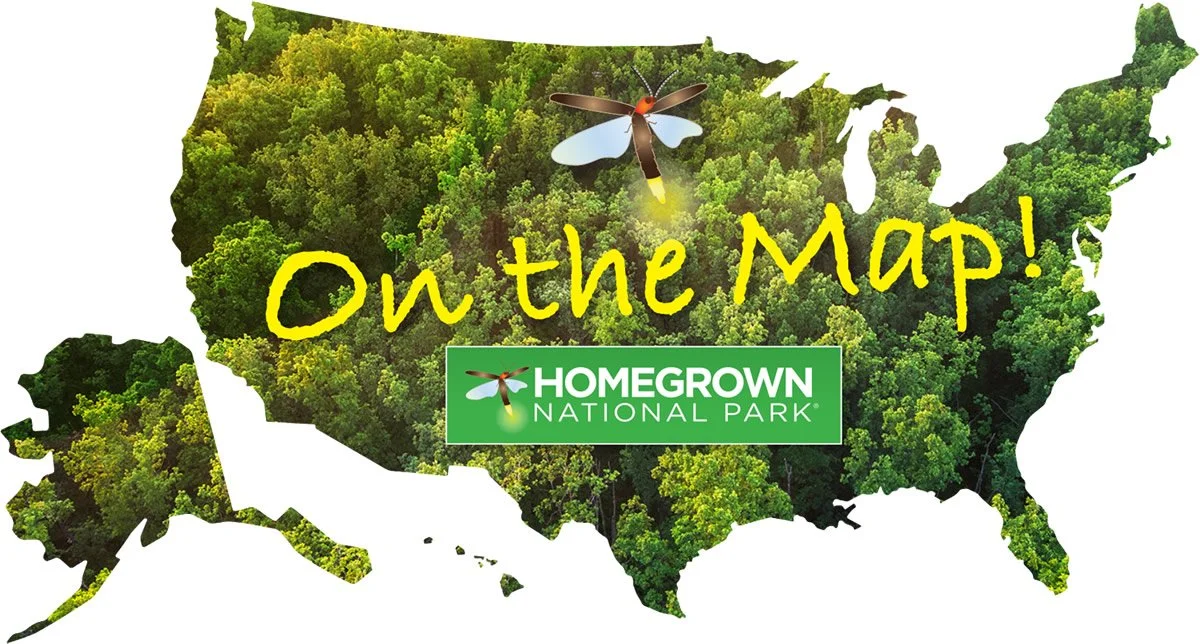FROM A GREEN DESERT TO A BIODIVERSE HABITAT: HOW NATIVE PLANTS CAN BRING LIFE TO YOUR YARD
Everybody wants a beautiful yard. It is well known that humans are naturally inclined to beautify the spaces they call home. Our sense of home is deeply intertwined with our environment and landscape.
Cultivating an environment that we find beautiful, in one way or another, speaks to an ancestral need for meaning, belonging, feeling safe.
Landscaping plays a huge role in beautifying our homes and outdoor spaces. However, it's not as simple as it may seem…
Unfortunately, the landscaping industry, for several decades, particularly in Florida, has been installing non-native ornamental plants that either become invasive or serve no ecological purpose in the native ecosystem, thus further contributing to the devastation of habitat and biodiversity loss.
However, the page is beginning to turn. People are waking up to the bleak reality of climate change and ecosystem devastation– and they want to help!
One of the best ways to restore biodiversity and create habitat for native ecology that uplifts flora and fauna is to plant native plants in your outdoor space!
Using native plants in the landscape has been proven to increase butterfly and pollinator populations, as well as birds and other crucial insects and wildlife that keep our delicate yet resilient ecosystem in perfect balance.
In this article, we’re going to dive into the crucial role that native plants play in restoring and maintaining biodiversity in the landscape.
Let’s get into it!
This guide by Ruffino Osario is a great resource for inspiration in your native garden!
First of All, What Are Native Plants?
To some degree, there is debate about what constitutes a native plant. However, the following is the framework that most conservationists, sustainable landscapers, and ecologists work from:
“A "Florida native plant" refers to a species occurring within the state boundaries prior to European contact, according to the best available scientific and historical documentation. Florida native plants include those species understood as Indigenous, occurring in natural associations in habitats that existed prior to significant human impacts and alterations of the landscape." – Florida Native Plant Society
In short, a native plant is considered to be a plant that was Indigenous to an area prior to European colonization and settlement.
This is somewhat debatable since what is known as the United States, or Turtle Island, was inhabited by Indigenous peoples and more than human kin (animals and insects) for thousands of years before European colonization. Naturally, seeds were brought from all over the continent by migratory groups of peoples and fauna.
Nonetheless, when it comes to understanding what a native plant is, the official definition is that it was Indigenous to the land before European settlement.
How do Native Plants Contribute to Biodiversity?
For thousands of years, native plants have existed in symbiotic relationships with the surrounding ecology and have robust relationships with other plants, insects, and animals.
Native plants are the bringers of biodiversity in a landscape, as they provide habitat and contribute to a larger ecosystem in a way that an introduced or non-native plant simply cannot.
In fact, restoring native plant habitats is absolutely vital to restoring biodiversity and keeping our ecosystems in a crucial, healthy, and sacred balance.
Urbanization and development have led to the destruction of intact, biodiverse ecosystems. Combine urbanization with the introduction of turf grass, invasive and non-native ornamental plants, and our native wildlife, insects, birds, etc, have nowhere to go.
Ecosystems are a delicate balancing act, and the micro always affects the macro. Remove biodiverse habitat, and you uproot the entire ecosystem– which undoubtedly has a chain reaction.
In our day-to-day lives, we see this chain reaction in constant and dangerous flooding, algal blooms, severe hurricane damage, massive loss of biodiversity and native flora and fauna, and, of course, climate change.
The Role that Your Yard Plays in Conservation and Protecting Biodiversity
Believe it or not, your yard plays a direct role in protecting and sustaining biodiversity!
Think about it: before your home was built, it was a wild space. Existing as a crucial part of a larger ecosystem that maintains balance on the micro and macro levels.
When a parcel of land is developed, the native species are bulldozed, leaving the flora and fauna dependent on that land with nowhere to go. After a home is built, it is typically landscaped in the traditional American way – with copious amounts of turf grass, non-native trees, and hedge bushes.
Take Florida, for example. Think of the traditional landscaping plants you see in people’s yards: Crape Myrtles, Camellias, Azaleas, Viburnum, Ligustrum, Podocarpus, and many others not native to North America.
When you take the initiative and choose to restore Florida native plants to your landscape, you are directly contributing to protecting and reinvigorating our biodiversity– something our wild spaces and even we as a species depend on!
A great resource to check out is Bringing Nature Home, a grassroots effort by conservationist Doug Tallamy encouraging people to bring nature home by planting native plants and growing your own “Homegrown National Park!”
He emphasizes the potential that each individual homeowner has in contributing to regenerating biodiversity by simply planting native plants in our backyards.
Mounting research shows that using native plants in the home garden has a direct result in increasing biodiversity and helping our native ecosystems thrive!
A Conventionally Landscaped Yard VS a Yard Incorporating Florida Native Plants and Florida-Friendly Plants
While conventional landscaping relies on non-native plants that require lots of irrigation, fertilizer, and pesticides, native plants, on the other hand, do not require even half as much inputs.
…AND they contribute to biodiversity in a way that a non-native plant simply cannot.
Now, we’re not saying you need to get rid of your turf lawn completely. Turf serves a purpose and acts as a soft place for barefooted little ones to play about and enjoy.
You can still have turf AND incorporate Florida native plants into your landscape. By reducing your turf lawn and planting keystone native species, you are contributing to protecting and fostering biodiversity, as well as taking steps toward climate resiliency!
While traditional landscaped yards with non-native ornamentals and loads of turf grass are often called ‘green deserts, ’ native landscaped yards are known as wildlife habitats.
Anyone’s yard can serve as an ecological oasis in the midst of a green desert of urbanization; it just takes a few keystone species, and before you know it, the birds, the bees, the butterflies, and other essential insects and wildlife will have a chance to not only survive but to thrive.
Climate Resilience and Your Yard
Loss of biodiversity is no small issue. On the contrary, the rate at which we have lost biodiversity since the Industrial Revolution is part of what has brought on the Sixth Mass Extinction event.
In a 2020 report published in the National Academy of Sciences by Gerardo Ceballos, Paul Ehrlich, and Peter Raven, Vertebrates on the Brink as Indicators of Biological Annihilation and the Sixth Mass Extinction, these authors bring awareness around how eminent and crucial it is to pay attention to how biodiversity loss is changing the planet.
In an article by the Guardian, Ehrlich is quoted saying, “The conservation of endangered species should be elevated to a global emergency for governments and institutions, equal to the climate disruption to which it is linked.”
Additionally, Doug Tallamy is quoted saying, “We can’t lose [biodiversity] and still continue on this planet,” and, “The really sad part is that nobody knows that. We think we’re separate from nature, but nature produces the life support systems that keep us around.”
Of course, large stretches of wildlife corridors are of the utmost importance; even small patches of land, like a backyard, for example, can play a pivotal role in supporting biodiversity.
Our aim is not to instill doom and gloom! Instead, we hope this information will radicalize you, incentivize you, to be a part of the monumental shift that will take our planet off a trajectory that does not sustain life of any kind, and bring about a new era of restoring biodiversity and healing our planet!
It is the small details that make up for the big picture!
If we all incorporate native keystone species into our outdoor spaces, whether in a container or in the ground, it will undoubtedly have a massive ripple effect and help to reverse some of the damage that development and industrialization have caused on our beloved planet!
You are the catalyst for change!
Conclusion
Returning to our need to beautify the spaces we call home, we’d like to point out that native plants are beautiful, too!
They also bring about an abundance of pollinators and other biodiverse wildlife that help us connect deeper with our natural environment and instill a sense of belonging and responsibility to our beloved ecosystems.
Your yard can be a part of the movement to save our planet and restore biodiversity! What are you waiting for?
Protect our wild spaces! Protect our biodiversity! Protect life! Plant some native plants today!
Overwhelmed? Don’t know where to begin? At Wacca Pilatka, our mission is to create sustainable & Florida-friendly landscapes that support the health of our ecosystems, promote biodiversity, and bring people closer to nature.
Click here to talk to our team of experts who will help you be a part of the change you want to see!











